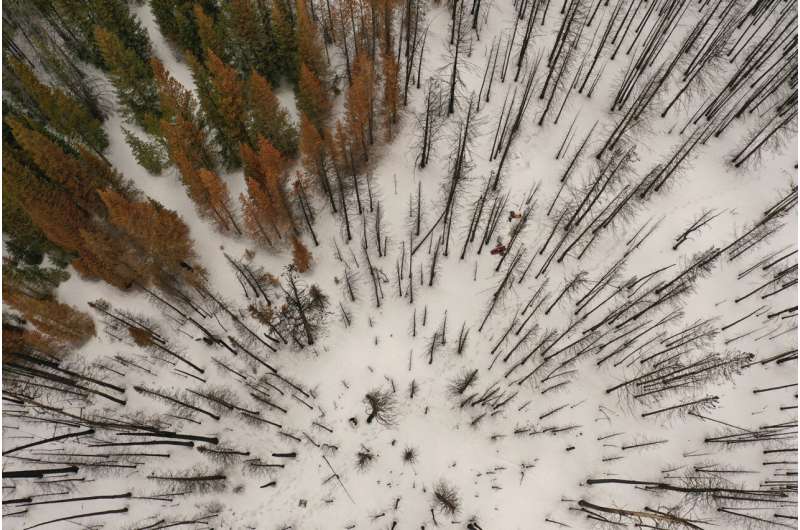September 26, 2022 report
Forest fires in late snowpack areas have a negative impact on water flow

Bob Yirka
news contributor

A team of researchers at Colorado State University has found that forest fires over the past several decades are having a detrimental impact on late snowpack areas in mountainous regions. In their paper published in Proceedings of the National Academy of Sciences, the group compares late snowpack melt over the years 1984 to 2020 in the Pacific Northwest.
Late snowpack in the mountains is snow on the ground that persists until late into spring in high altitude areas. Prior to the advent of global warming and increased forest fires, late snowpack would persist until well into the spring months due to cold temperatures at high altitudes. And then it would suddenly warm, quickly melting the snow and sending water down the mountain into streams and eventually to rivers. That increase in river water levels has come to be used for a variety of purposes, from growing crops to energy production. Animals also have become reliant on the water. But now it seems that in many places in the Rocky Mountains, things are changing. And it is all due to global warming.
Global warming has contributed to longer, more intense fires in forested areas, including the Rocky Mountains. And many of those fires have been occurring at higher elevations. In this new effort, the researchers looked at the changes such fires are having on late snowpack.
The researchers began their work by tracking the number of fires that occurred at higher elevations in the U.S. Pacific Northwest over the years 1984 to 2020 and found they have been increasing dramatically. They also tracked initiation of snowpack melting over the same time period and found it began between 18 to 24 days earlier than it did just 36 years ago. In looking at specific sites, they found that, on average, snowpack melting zones had seen an increase in wildfire activity of 70%.
They also found that different areas had seen different impacts—those on south-facing slopes, for example, were more vulnerable to early melting after a fire due to more solar energy absorption. Similarly, they found more cloudy areas to be less impacted. They also found that in many places, snowpack areas melted more slowly, allowing water to seep into the ground, rather than run down the hill into streams—and that has left less water for use by both humans and animals. The researchers also found that early melting has meant longer, drier summers, which can lead to more susceptibility to fires.
Written for you by our author —this article is the result of careful human work. We rely on readers like you to keep independent science journalism alive. If this reporting matters to you, please consider a (especially monthly). You'll get an ad-free account as a thank-you.
More information: Stephanie K. Kampf et al, Increasing wildfire impacts on snowpack in the western U.S., Proceedings of the National Academy of Sciences (2022).
Journal information: Proceedings of the National Academy of Sciences
© 2022 Science X Network




















